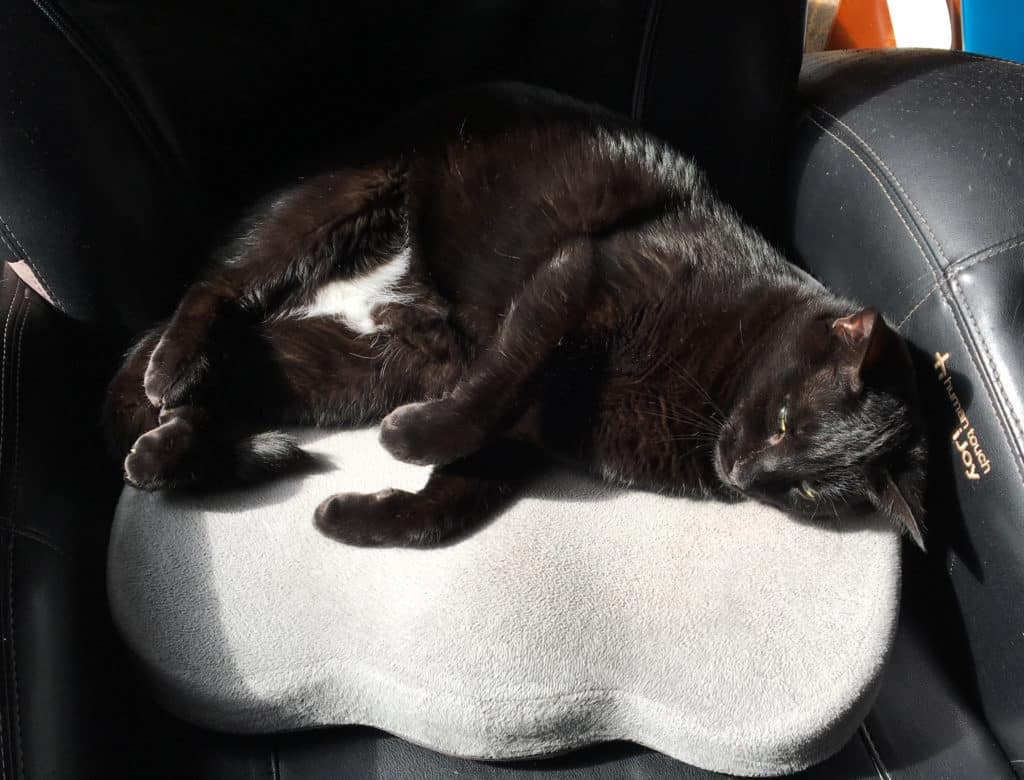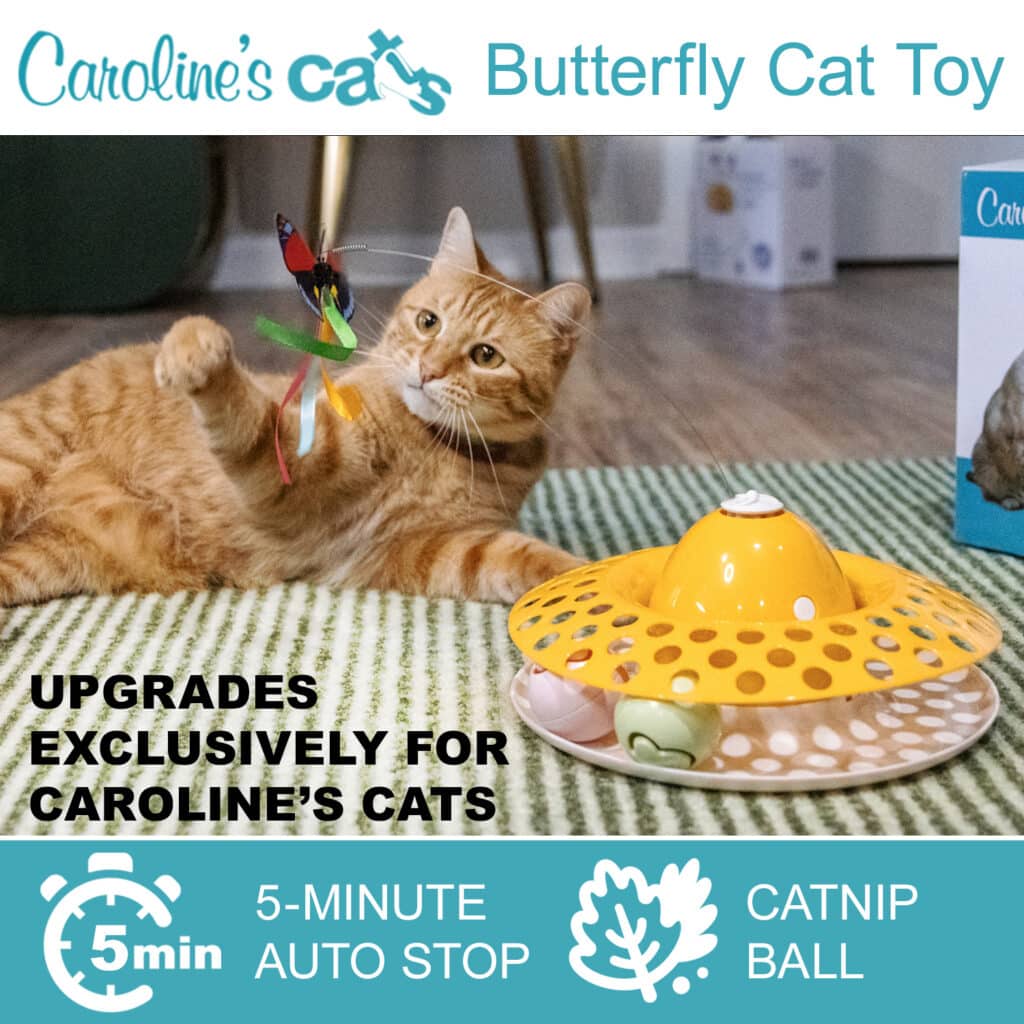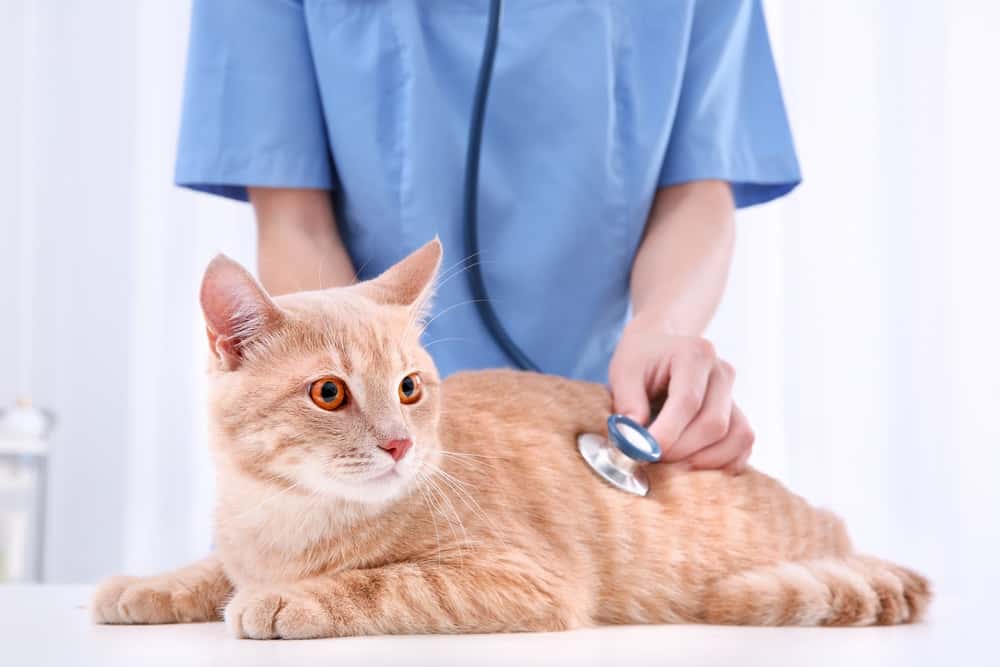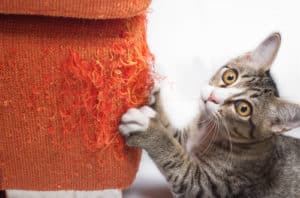Just like us, cats get sick. Common cat health problems like infections and parasites can often befall your pet with little or no warning.
About a year ago, we had a scare with our 3-year-old male cat, Samerang. (Yes, I know it’s an unusual name. I’ll talk about cat names in a future post.)
I suspected he wasn’t well because he was spending all his time under the bed and wasn’t acting quite like himself. The change in behavior was subtle, and my spouse didn’t agree that there was a problem. Two days later, we were at the emergency vet at 9 p.m.
We had discovered him lying in the hallway. He was lethargic and warm to the touch. The vet discovered he had a 104 degree fever (Normal body temperature for cats is about 100 to 102.5 degrees Fahrenheit). They gave him fluids, anti-inflammatories, and antibiotics, and told us to take him to our regular vet in the morning.
Our regular vet examined him and told us to keep him on the antibiotics. But when he didn’t show improvement after a few days, talk turned to FIP.
We were lucky. Our vet changed Samerang’s antibiotics and he recovered from his disease that was never diagnosed. He’s currently a happy, healthy cat.

Cats hide their pain and it’s often difficult to tell when they’re sick.
Always consult your vet if you’re not sure about your kitten’s symptoms or her behavior.
The good news is that most common cat health problems are easily preventable and treatable. Here’s a list of some common cat health problems and symptoms you should look for.
Hairballs
Hairballs are among the most common cat health problems. Cats are fastidious and groom themselves frequently. When they groom, they swallow the loose hair that sticks to their tongues. Occasionally, the hair gathers into a ball and lodges your cat’s digestive tract instead of passing on through the body. If your cat starts coughing and hacking she probably has a hairball.
Though it’s not pleasant for you when your cat coughs up a hairball, it’s better than a possible intestinal blockage. This can be a life-threatening problem. There are a few signs that could indicate that your cat’s hairball is dangerous. If your cat is constipated, not eating, is lethargic, or has a dull coat, then he could have a serious blockage. A vet exam is definitely in order.
To prevent hairballs, brush your cat frequently to remove loose hair. You can also purchase special cat food that prevents hairballs.
Worms
Worms (intestinal parasites) are also among the most common cat health problems. Roundworms, tapeworms, and hookworms most commonly infect cats. Often cats don’t show any outward signs and an infestation can go undetected.
Symptoms of intestinal parasites in cats include:
- Weight loss
- Worms visible in stool or near anus
- Diarrhea
- Bloated stomach
- Constipation
If your cat is exhibiting any of these symptoms, take her to the veterinarian for worm testing.
Intestinal worms are easily cured with a few doses of medication, but if left untreated, they can be fatal.
Cats can occasionally develop heartworm, as well.
Heartworm is spread by mosquitos and is becoming an increasingly common cat health problem. Cats are not a natural host for the heartworm parasite, and it may not complete its entire life cycle in an infected cat. As a result, fewer and smaller worms survive and may not reach the cat’s heart. However, the surviving worms and the cat’s immune response to them can cause serious health problems.
Here are the heart worm symptoms you should look for in cats:
- Persistent cough
- Difficulties breathing
- Loss of appetite
- Weight loss
- Vomiting
It’s not easy to diagnose heartworm in cats, and there are not any approved products in the U.S. for treating heartworm in cats. On the bright side, many cats infected with heartworm can fight the infection themselves. If your cat has any of these symptoms or you suspect that she has heartworm, make sure and see your vet.

Urinary Tract Disease
Urinary tract disease is one of the more common cat health problems. FLUTD (Feline Lower Urinary Tract Disease) consists of a number of conditions that affect your cat’s bladder and urethra. These conditions can include bladder stones, infection, urinary tract blockage, or cancer. FLUTD is particularly common in unneutered male cats, although female cats can also develop this problem.
If your cat suddenly stops using the litter box, FLUTD is suspected. If your cat’s urine smells strong, again FLUTD may be the cause. These conditions need to be treated by a veterinarian. Ask about cat foods that reduce the likelihood of another episode.
Feline Infectious Peritonitis (FIP)
FIP is caused by a mutation of the corona virus. According to some experts, cats living in multi-cat environments tend to test positive for enteric corona virus. Cats can live with that virus remaining quietly in the intestines with no sign of disease for their entire lifetime. In other cases the virus mutates into FIP possibly because of a genetic pre-disposition.
Once a cat has contracted FIP, it will display symptoms of a mild upper respiratory infection: sneezing, watery eyes, and nasal discharge. It may also have diarrhea, weight loss and lethargy. Most cats fully recover from this primary infection, although some may become virus carriers. A small percentage of exposed cats develop lethal FIP weeks or even years after the primary infection.
Here’s an article about FIP if you would like more information on this disease.
Feline Immunodeficiency Virus
FIV, or cat AIDS, is not always fatal. FIV decreases the ability of the cat’s immune system to fight infections. Cats with FIV may remain free of symptoms for years.
It’s when the cat contracts other illnesses in the chronic stage of FIV infection that FIV is first suspected. This long list of illnesses includes oral-cavity infections, upper-respiratory infections, weight loss, ear infections, kidney disease, and many others.
Although there is, as yet, no vaccine, all cats should be tested for the virus. The virus is transmitted through saliva, usually when a cat is bitten in a cat fight.
Feline Leukemia Virus
FLV was, until recently, the most common fatal disease of cats. But with a vaccine now available, the number of cases is dwindling.
Although the name leukemia means cancer of the white blood cells, this is only one of the many diseases associated with this virus. Other diseases associated with the virus include other types of cancer, anemia, arthritis, and respiratory infections.
FLV is preventable if your cat is immunized before being exposed to the virus. Although the disease is not always immediately fatal, cats with FLV rarely have a long life expectancy. NEVER bring other cats into your household when you have a cat with FLV.
Lyme Disease
If your cat spends time outdoors, you should check him regularly for ticks. If you find a tick on your cat’s body and he has been lethargic and acts as if he’s in pain, ask your vet to test for Lyme Disease. This disease is transmitted to people and animals by deer ticks.
Some cats may show subtle symptoms while others may show none. Symptoms are hard to recognize and often may be confused with other illnesses or old age.
Be observant of your cat’s behavior. It’s the only way to know if your pet has contracted Lyme disease if no tick was found.
Some symptoms of Feline Lyme Disease include:
- Lethargy
- Reluctance to jump or climb stairs
- Limping, or reluctance to put weight on a paw
- Loss of appetite
The key to dealing with Feline Lyme Disease is prevention along with early diagnosis and treatment. You should also reduce the tick population around your home.
Prevent Common Cat Health Problems
Prevention is the first line of defense for most common cat health problems. Take your cat for regular vet visits and keep her vaccinations up-to-date.
Keeping your cat indoors will protect him from exposure to deadly viruses, ticks, accidents, and other hazards.
While outdoor cats enjoy greater freedom, they will require greater attention to their health and regular visits to the veterinarian.





Thanks for sharing this informative article! I took in a cat over the summer who I found out has cat AIDs. The vets were extemwly worried about me and the cat. Fortunately I had a cat with FIV when I was younger. He lived out his life just fine. Which proves that it’s not always fatal.